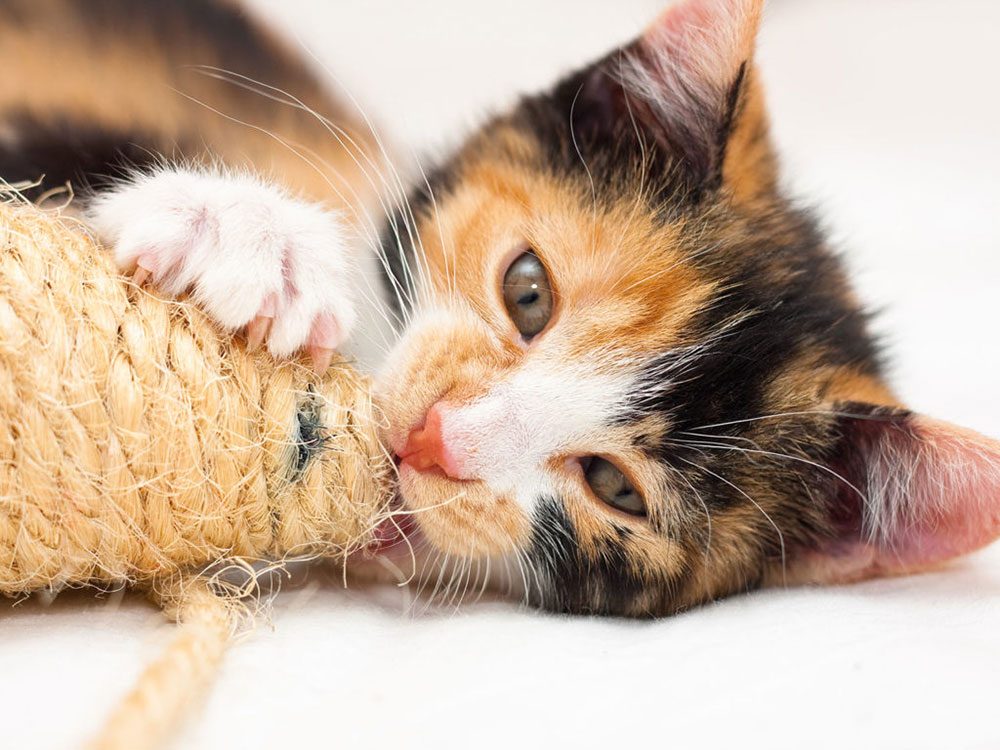Why Are All Calico Cats Female?
We asked veterinarians to explain why all calico cats are born female, and received some fascinating insight into feline genetics. Here’s the answer to the calico question, along with some helpful hints on predicting the colourations of your cat’s next litter!

Ever wondered why all calico cats are female?
The occurrence of male calico cats is theoretically impossible. Ordinarily, male cats have XY sex chromosomes, while females have XX. The X chromosomes carry the genes for coat colours. Therefore, female cats inherit their coat colour from both their queens (XX) and their toms (XY). To create a calico (or tortoise-shell) pattern, one of the X chromosomes must carry the black gene and the other the orange gene. If a black male and an orange female mate, the result will be a half-black and half-orange female offspring-a calico. A black female and an orange male will also produce a calico female.
Usually, the male kitten inherits its coat colour from the queen alone, since the Y chromosome determines its sex but has nothing to do with its coat colour. A male black cat mating with an orange female will produce an orange male; a male orange cat and black female will produce a black male kitten.
Geneticists have discovered that only one of the two X chromosomes in females is functional, which explains why you usually can make a blanket prediction that any male offspring will be the colour of the queen. But occasionally, chromosomes misdivide, and a male calico is born with an extra chromosome-two X chromosomes and one Y chromosome. If one of the X chromosomes carries the orange gene and the other the nonorange, a calico will result.
Note that the presence of the extra X chromosome doesn’t in itself create the calico. If both chromosomes are coded for orange or black, the offspring will be that colour rather than a combination.
Abnormal chromosome counts are unusual but not rare. Most cat cells contain nineteen pairs of chromosomes, but sometimes a mutation will yield one extra chromosome or double or triple the normal number.
Although male calicoes are oddities (according to Judith Lindley, founder of the Calico Cat Registry International, approximately one male calico is born for every 3,000 females), the cat breed experts we consulted indicated that they are normally healthy and have excellent life expectancies. But, unlike their female counterparts, male calicoes do tend to have a common problem-their sexual organs are often malformed, so they are usually sterile. Don’t miss these 10 warning signs of cancer in cats.
Would you recognize these 15 signs your cat is secretly mad at you?



